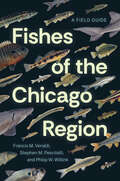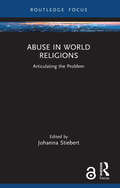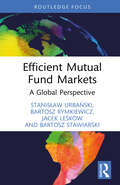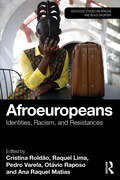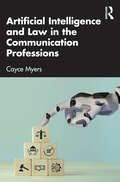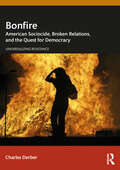- Table View
- List View
Shy Creatures: A Novel
by Clare Chambers"A beautiful story of unfolding secrets and unforeseen consequences, filled with moments that are somehow restrained and astute and gorgeously written all at the same time."—Holly Gramazio, bestselling author of The Husbands“Infinitely moving, quirky, acutely observed and beautifully written...Confirms Clare Chambers as one of our most talented writers."--The GuardianAn alluring literary mystery full of secrets and lies, when an art teacher at a psychiatric hospital in 1960s England finds her life turned upside down by the arrival of a mysterious patient who has spent decades living in complete isolation with his elderly aunts in a decrepit Victorian house. Perfect for fans of Ann Patchett, Barbara Kingsolver, and Tessa Hadley.In all failed relationships there is a tipping point. It goes unnoticed at the time but can later be identified as the beginning of the decline. For Helen it was the weekend that the Hidden Man came to Westbury Park…The London suburb of Croydon,1964: Helen Hansford is unmarried and in her thirties. Something of a disappointment to her middle-class parents, she’s an art therapist at the Westbury Park psychiatric hospital, where she has been having a rebellious love affair with her colleague Gil, a dashing but married doctor.One spring afternoon they receive a call about a disturbance at a derelict, vine-covered Victorian house a few miles up the road. There the police find a mute, thirty-seven-year-old man called William Tapping, his hair and beard down to his waist. It appears he lives in the old house with his elderly, frail aunt, who expires as soon as she’s admitted to the hospital. No one knows why William has been shut away for decades, unseen by neighbors, with only his two now-deceased aunts for company. Westbury Park becomes his refuge.When it emerges that William is not only sane but a talented artist, Helen comes to see him as something of a personal project. But as she tries to solve the puzzle of the Hidden Man’s past, Helen’s own carefully constructed life of secrets begins to unravel...A gorgeously written and life-affirming novel about life’s delicate layers of experience and connection, Shy Creatures reveals all the different ways we can be confined...and liberated.
Journal of Political Economy, volume 133 number 6 (June 2025)
by Journal of Political EconomyThis is volume 133 issue 6 of Journal of Political Economy. One of the oldest and most prestigious journals in economics, the Journal of Political Economy presents significant and essential scholarship in economic theory and practice. The journal publishes highly selective and widely cited analytical, interpretive, and empirical studies in a number of areas, including monetary theory, fiscal policy, labor economics, development, microeconomic and macroeconomic theory, international trade and finance, industrial organization, and social economics.
Contested Civil Society in Myanmar: Local Change and Global Recognition
by Maaike MatelskiAvailable open access digitally under CC-BY-NC-ND licence. This book centres on various contestations in Myanmar society and illustrates the ways in which these are reflected in civil society. The book offers a concise overview of recent political developments in the country, from the short-lived attempts at democratization to the 2021 military coup, and analyses the involvement of various civil society actors, as well as their international supporters. It incorporates multiple identities and fault lines in Myanmar society and explains how these influence diverse perceptions, framing and agenda setting as political developments unfold. The book provides an up-to-date overview of the main identities and contestations within Myanmar’s civil society and, by extension, within Myanmar society as a whole. It also gives recommendations to donors, policy makers and researchers wishing to better understand and support local civil society actors operating in repressive environments.
The Oldest Constitutional Question: Enumeration and Federal Power
by Richard PrimusA groundbreaking challenge to a core principle of constitutional law, arguing that congressional action is not limited by the legislative branch’s textually enumerated powers.Every law student learns that the federal government is constrained to act only according to its enumerated powers, meaning that Congress can do what the Constitution expressly authorizes it to and nothing more. Yet Richard Primus contends that this longstanding orthodoxy—allegedly required by the text of the Constitution, the Framers’ vision, and the logic of federalism—is fundamentally flawed.Through careful analysis of constitutional text and history, and of the structure of American federalism, The Oldest Constitutional Question builds a powerful argument for broad congressional authority. In particular, Primus shows that the primary function of enumeration is to rule listed powers in, not to rule other powers out. The Framers were more worried that the federal government might be fragile and anemic than that it would be overwhelmingly strong. Enumerating congressional powers is thus best understood as a way of ensuring that the federal legislature has an incontestable warrant to exercise the powers specified there, not as an exhaustive description of all that Congress can do.In practice, the enumeration of powers does little to limit Congress. But most constitutional lawyers—including many Supreme Court justices—think this means something has gone wrong, such that the courts must aggressively strike down federal laws exceeding Congress’s enumerated powers. Primus’s meticulous examination explodes the prevailing view, revealing its underlying errors. The constitutional system does place limits on Congress, and crucially so, but the enumeration of powers is not, and never has been, a sensible means for creating and enforcing those limits.
Whiskerology: The Culture of Hair in Nineteenth-Century America
by Sarah Gold McBrideA surprising history of human hair in nineteenth-century America, where length, texture, color, and coiffure became powerful indicators of race, gender, and national belonging.Hair is always and everywhere freighted with meaning. In nineteenth-century America, however, hair took on decisive new significance as the young nation wrestled with its identity. During the colonial period, hair was usually seen as bodily discharge, even “excrement.” But as Sarah Gold McBride shows, hair gradually came to be understood as an integral part of the body, capable of exposing truths about the individuals from whom it grew—even truths they wanted to hide.As the United States diversified—intensifying divisions over race, class, citizenship status, and region—Americans sought to understand and classify one another through the revelatory power of hair: its color, texture, length, even the shape of a single strand. While hair styling had long offered clues about one’s social status, the biological properties of hair itself gradually came to be seen as a scientific tell: a reliable indicator of whether a person was a man or a woman; Black, white, Indigenous, or Asian; Christian or heathen; healthy or diseased. Hair was even thought to illuminate aspects of personality—whether one was courageous, ambitious, or perhaps criminally inclined. Yet if hair was a teller of truths, it was also readily turned to purposes of deception in ways that alarmed some and empowered others. Indeed, hair helped many Americans to fashion statements about political belonging, to engage in racial or gender passing, and to reinvent themselves in new cities.A history inscribed in bangs, curls, and chops, Whiskerology illuminates a period in American history when hair indexed belonging in some ways that may seem strange—but in other ways all too familiar—today.
Fishes of the Chicago Region: A Field Guide
by Francis M. Veraldi Stephen M. Pescitelli Philip W. Willink“A treasure of hardcore fish intelligence and delightful tidbits of fish history.”—Dale Bowman, Chicago Sun-Times Fish don’t heed state boundaries, and neither does this comprehensive, photo-filled guide to the diverse species of Chicago and beyond. Encompassing southern Lake Michigan, northeastern Illinois, and adjacent areas of Indiana, Michigan, and Wisconsin, the Chicago Region is home to rare habitats supporting diverse fish populations. From small creeks to large rivers and from small ponds to one of the world’s largest freshwater ecosystems, Lake Michigan, these systems are home to some 164 fish species representing 31 families. In this essential field guide, the most complete and up-to-date reference for fishes in the Chicago Region, we meet them all—lampreys, sturgeon, paddlefish, gars, drum, darters, perches, sticklebacks, sculpins, and more. Written by leading local ecologists and featuring a pictorial family key, color photographs, detailed species distribution maps, and natural history observations unique to the region, this go-to guide belongs on the shelf—and in the boat—of every angler, naturalist, fisheries manager, and biologist.
Kars Province under Russian Rule: Imperial Rivalry and Nation-Building in the Periphery, 1878-1918 (Central Asia Research Forum)
by Candan BademThis book analyses the borderland province (oblast) of Kars under Russian imperial rule from 1878 to 1918. It is a study of imperial expansion, inter-imperial rivalry, colonization, legal and administrative pluralism, nation building and state building.Based on archival work in the state archives of Turkey (Ottoman archives), Russia, Georgia, Armenia and Azerbaijan, the author develops a more balanced understanding of the multiple dynamics in play. This book provides an accurate and reliable account of the history of Russian rule in the Kars province. It is an important case study of the technologies of imperialism, the way one empire conquers a part of another empire and attempts to integrate that province into its empire.Correcting the distorted and often false histories of nationalist historians, this book will be of interest to historians of Russia and the Ottoman Empire, borderland studies and the history of the South Caucasus.
Intersectionality and the City: Exploring Violence and Inequality in Urban Space (The Refiguration of Space)
by Lucie Bernroider, Anthony Miro Born, Christy Kulz and Sung Un GangThis book combines intersectional perspectives and urban research to demonstrate the importance of intersectionality as a concept that can complement “refigurational” understandings of social change as the outcome of spatial conflicts. Showing how intersectionality enables us to grasp the intersecting categories of inequality in these spatial tensions, it remains attentive to the role of social difference and power in these processes, as well as to modes of normativity and resistance. With case studies gathered from a range of national contexts, it provides rich empirical insights into the relationship between urban spatialities, power dynamics, and embodied social inequalities, addressing the manner in which different conflicts are made manifest intersectionally in and through situated urban spaces. The chapters consider issues such as the gendering and racialization of urban spaces; urban marginality and environmental pressures; intersectional power dynamics in research; heteronormative and cisgender- centric structures in the city; aging in the city; young people, control, and insecurity; police violence; migrant emplacement and activism; racialized gentrification and commoning, and pandemic safety and protest, to explore the uneven outcomes of spatial planning and urban development. As such, it draws attention to the interplay of various forces in the production of exclusion and injustice and will therefore appeal to scholars of sociology, geography, and urban studies with interests in inequality, social change, and resistance to exclusion.
Quranic Concepts in Islamic Psychology and Spirituality: Application in the Modern World (Islamic Psychology and Psychotherapy)
by Zuleyha KeskinThis book explores how the Qur’ân’s timeless teachings enrich contemporary psychological theories, bridging the gap between Islāmic wisdom and psychological well-being.It offers a comprehensive guide to understanding and applying Qur’ânic concepts in the realm of mental health. Grounded in Islāmic scholarship, it references both classical and modern Islāmic sources to explain fundamental Qur’ânic concepts in Islāmic psychology. The book is structured around three key areas: first, an Islāmic perspective on human faculties, essential for self-knowledge and self-awareness; second, the five pillars of Islam, which play a central role in psychological resilience; and third, various Qur’ânic spiritual concepts linked to mental well-being, such as ṣabr (patience), shukr (gratitude), riḍā (contentment) and iṭmi’nān (peacefulness).By integrating Islāmic principles with contemporary psychological insights and promoting a holistic approach to well-being, this book serves as a vital resource for personal development, academic study, and professional practice, particularly for mental health professionals working with Muslim clients.
Abuse in World Religions: Articulating the Problem (Rape Culture, Religion and the Bible)
by Johanna StiebertThis book opens out religious studies discussion on spiritual abuse to extend beyond the primary focus on Christian settings and situations. Emphasising the diversity and reach of manifestations of spiritual abuse, it offers snapshots and examples from five major religious traditions.Following a definition of “spiritual abuse” and a qualification of the application of the designation “world religions”, five chapters - each by subject experts - demonstrate that spiritual abuse can be identified in contexts of Hinduism, Judaism, Christianity, Islam, and Sikhi(sm). The chapters draw on sacred texts, historical events, religious institutions, practices, or figures particular to each tradition, paying heed to how specific examples can relate to wider, or systemic tendencies. Throughout, there is emphasis on trauma-informed and survivor-centred approaches.Abuse in World Religions (Vol. 1) will appeal to academics of religious studies with interest in rape culture and spiritual abuse, as well as upper-level undergraduates and postgraduates, and religious leaders, or leaders of faith-based organisations, seeking to understand and to confront spiritual abuse and rape culture in their own communities.The Open Access version of this book, available at http://www.taylorfrancis.com, has been made available under a Creative Commons Attribution-Non Commercial-No Derivatives (CC BY-NC-ND) 4.0 license
Barcelona: Urban Commons and Local State Assemblages (Built Environment City Studies)
by Iolanda BianchiThis book explores the complex relationship between urban commons – understood as a repertoire of collective action that fosters a politics of antagonism – and the local state. It critiques the dominant neo-institutionalist and neo-Marxist perspectives for their deterministic and siloed views, as well as the insufficient attention they pay to the municipal scale. The book proposes a more nuanced, urban-based, outcome-oriented approach rooted in assemblage theory.The analysis addresses a central question: can urban commons-local state assemblages benefit the politics of urban commons? The book argues that they can, provided they form rhizomatic assemblages. These allow urban commons to retain their self-governing autonomy, even as they lose some of their material autonomy. Conversely, it shows that assemblages can also take arborescent forms, allowing the local state to undermine the self-governing autonomy of the urban commons.Focusing on Barcelona, the book examines how rhizomatic and arborescent assemblages are constructed, as well as the strategies that urban commons can undertake to build rhizomatic assemblages. This book is essential for scholars, policymakers, and activists interested in urban governance, commons theory and transformative politics. It provides both theoretical insights and practical tools for harnessing the dynamics of the urban commons and the local state to drive meaningful socio-political change.
Routledge International Handbook of Critical Policing Studies (Routledge International Handbooks)
by Gary Cordner Angela Dwyer Nicole L. Asquith James Clover Jess Rodgers Rishweena AhmedCritical analyses of policing have accompanied accounts of the police since the early days of modern police organisations. More so than ever, police and policing are subject to close and critical scrutiny from governments and the public. It is timely, therefore, to consider what is critical about police and policing.The Routledge International Handbook of Critical Policing Studies brings together scholars and practitioners to critically explore the full continuum of safety governance from police reforms to the redistribution of policing resources to the replacement of state police. In offering the three Rs of policing—reform, redistribute, replace—we provide a conceptualisation of critical policing studies that acknowledges a continuum of policing that mirrors the different trajectories, priorities, and possibilities that exist across different cultural and historical contexts. This collection is composed of 65 scholars and practitioners across 39 chapters, edited by a team of police pracademics and policing scholars, to showcase accounts of policing from outside the Anglo-European metropole, privileging works from First Nations people and from the Global South, and presenting contextualised solutions to the problems facing police and communities.This Handbook identifies the key issues facing the police and safety governance across the globe and offers insights into the implications for policing theory and practice, proposing solutions to some of the most intransigent problems facing contemporary societies. Individually, and as a collection, this Handbook will be an essential read for scholars, practitioners, and activists alike.
Teaching Storytelling in Classrooms and Communities: Amplifying Student Voices and Inspiring Social Change (Equity and Social Justice in Education Series)
by Maru Gonzalez Michael Kokozos Christy M. ByrdUnleash the transformative power of storytelling to build belonging, ignite critical consciousness, and amplify students’ voices. This dynamic book equips educators who work with middle and high school aged youth to teach storytelling in their classrooms or community organizations.Through inspiring examples and hands-on teaching strategies, the authors show you how to build trust and foster community, explore diverse storytelling modes and formats, guide students in developing effective and ethical social impact stories, and more. You’ll also discover practical tools to help students broaden their story’s reach and impact through collaboration and coalition building. Each chapter brims with student examples, ready-to-use teaching tips, and experiential activities, plus questions designed to spark dialogue and help students awaken and embrace the storyteller within. There are also reflective prompts to support your own journey as both a facilitator and participant in the storytelling exchange.Packed with practical resources, moving narratives, and actionable tips, this book is your essential guide to cultivating a supportive learning community, increasing student engagement, and unlocking young people’s leadership potential through the vehicle of storytelling.
Difficult Conversations in Education, Health and Social Care: How to Talk About What Really Matters and What to Do When it All Goes Wrong
by Becky Edwards Chris SmethurstThis accessible guide combines evidence-based research with practical experience to help develop effective communication skills for navigating difficult or challenging situations.The book delves into what it means to be an effective and confident communicator, before addressing how to approach those often-avoided ‘difficult conversations.’ Key features include: Strategies for tackling tough topics, from handling emotional outbursts to addressing both conscious and unconscious reactions Approaches for discussing sensitive issues like trauma, sexuality, gender, race, and serious concerns Engaging case studies, scenarios, activities, and top tips to support discussions Practical advice on how to enhance communication skills and prevent difficult conversations from escalating Exploring concepts and techniques that can be applied across various professions and in personal life The authors emphasise the importance of applying the right skills, knowledge, and experience to transform a challenging conversation into an effective, solution-focused, and collaborative exchange. With innovative ideas for making tough discussions more manageable, this book is an invaluable resource for professionals in education, social services, healthcare, and similar fields.
Efficient Mutual Fund Markets: A Global Perspective (Routledge Focus on Economics and Finance)
by Jacek Leśkow Stanisław Urbański Bartosz Rymkiewicz Bartosz StawiarskiThis book covers a new and innovative approach to the issue of investment portfolio efficiency from the perspective of a large institutional investor. It discusses the challenges relating to changes in returns on the international stock market, with particular emphasis on investments.Instead of focusing on just one designated market, the book examines four diversified, developed markets, and models the Polish market as a representative of emerging markets. The authors argue that the current market for available financial instruments, mainly derivatives, may be an example of a partially complete market. With such assumptions, they test selected markets, assuming that a representative investor, such as an investment fund, makes rational decisions and uses all available financial instruments. The research conducted in the book is unique in its assumption that investors form portfolios that consider the structure of the company's financial results. The significant impact that the financial crisis in the United States since 2007, the COVID-19 pandemic, and Russia's aggression against Ukraine have had on investors' decisions is also discussed.The book will find an audience among researchers, scholars, and students specialising in finance and capital market investments.
Water and Land in the Sahel: Mapping the Flow (Routledge Studies in African Geography)
by Angela Kronenburg García Andrea Pase Mariasole Pepa Federico Gianoli Marina Bertoncin Carla BragaDrawing on over thirty years of research, this book investigates the intermingling of land and water in the Sahel, analysing landscapes defined by the ebb and flow of rainfall, flooding and population movements, as well as environmental, political and social crises.Exploring both the seasonal flooding of rivers around the Nile, Chari-Logone, Niger and Senegal, as well as agricultural irrigation projects such as dams, canals and pumping stations, the book examines the different narratives related to water and land in the Sahel. It combines fieldwork research with remote sensing, big data and GIS mapping to outline the ever-changing interplay between land and water in the region. Beyond this, the book also reinterprets the colonial and post-colonial legacies of large-scale irrigation projects and the geopolitical interests which defined them.Supported by an Open Access website with a WebGIS and further maps and analysis, this book is an essential read for policy makers and development practitioners in the region, as well as for researchers and scholars across the fields of geography, history, political science, sustainable development and African studies.
Multivocality in World Heritage: Rjukan-Notodden Industrial Heritage Site, Norway (Routledge Cultural Heritage and Tourism Series)
by Inger Birkeland Steffen F. Johannessen Guro Nordby Benjamin RichardsThis book examines multivocality in 21st-century World Heritage management through an in-depth interdisciplinary exploration of the complexity and plurality of voices on the ground at a specific World Heritage site, offering new perspectives and insights into the established inherent tension between change and heritage conservation.Through an interdisciplinary approach, the book presents a rich variety of cases grounded in a single World Heritage site, to provide new insights and perspectives on World Heritage as complex local phenomena entangled in global processes. Multivocality and constant change are fundamental to all societies, and must therefore be emphasised and also applied to World Heritage sites, including the UNESCO site under scrutiny in this volume: The Rjukan-Notodden Industrial Heritage Site in Southern Norway. If World Heritage is to promote shared commitments to both conservation and principles of sustainability, the concept of conservation must acknowledge and accommodate change. Bringing together academic approaches from different disciplines, this edited volume addresses this pressing issue by paying serious attention to local complexities and multiple perspectives on the ground. The cases presented demonstrate the relevance of applying a broader sense of multivocality to improve practices in World Heritage management, policymaking, planning and governance. Multivocality emerges as a perspective attentive to diversity and complexity, questioning reductionism, and challenging monocultural thinking in global World Heritage management, while supporting a more democratic multitude of voices in World Heritage sites, both human and more-than-human.This book will be of interest to researchers and students in the multidisciplinary field of heritage, heritage policymakers and bureaucrats, international advisory bodies to UNESCO, as well as managers at different levels in the World Heritage arena.
CHART: Designing Creative Data Visualizations from Charts to Art (AK Peters Visualization Series)
by Nadieh BremerCHART is a guide to unleashing creativity in data visualization. It takes you on a journey along the spectrum from an ordinary chart to data art, packed with ways to bring more creativity into any visualization. It will help to make your visuals more compelling and memorable, long after the numbers have been crunched.Drawing from over a decade of experience, the author shares thirteen hands-on, tool-agnostic lessons, each filled with actionable insights and unique perspectives. Between these core lessons, you’ll find tips, mini-chapters, and dozens of real-world examples from both client and personal projects. The book also includes exclusive glimpses into early sketches, works-in-progress, and in-depth design stories that reveal how creativity in data is often a messy, non-linear, but ultimately rewarding process. CHART: Designing Creative Data Visualization from Charts to Art is designed for journalists, data analysts, business professionals, and newcomers alike, these lessons empower readers to push beyond the default. By the end of the book, you’ll have the tools and inspiration to transform typical charts and graphs into visuals that not only inform but also captivate and connect with your audience. This book invites you to break the mold and think outside the chart.
Afroeuropeans: Identities, Racism, and Resistances (Routledge Studies on African and Black Diaspora)
by Cristina Roldão Raquel Lima Pedro Varela Otávio Raposo Ana Raquel MatiasAfroeuropeans: Identities, Racism, and Resistances reflects on the tensions, ambiguities, and paradoxes of Blackness in Europe.The book addresses relations of domination and modes of racial exclusion, but also Afro-European interventions in the political, social, cultural, and artistic spheres, and the multiple resistances that have sustained Black bodies in the European continent. At the same time as Black histories, cultures, and social conditions are made invisible in hegemonic accounts in Europe, there is a hypervisibility and presence of Black stereotyping in European popular culture. Black identities have become even more conditioned by new mainstream far-right discourses and the tightening immigrant and refugee policies that affect people of African descent. One of the book’s most innovative contributions is the attention it gives to Black South European thought, experiences, and resistance—particularly in the Portuguese context. This constitutes not only a critique Europe’s pervasive racism and "color blindness" policies but also makes a significant contribution to a broader understanding of Blackness and racism, extending beyond the U.S. and Northern European contexts.This book is forged in a moment of particularly strong Black intellectual and political vitality. Given the book’s intersectional and transdisciplinary approach, it will be an important go-to for students and researchers across the humanities and social sciences, as well as to artists, activists, politicians, and journalists.
Mahasweta Devi in Defence of the Human: The Poetics of Translating Resistance
by Anuradha GhoshThis book re-thinks the literary and social worlds of Mahasweta Devi, the prolific and influential writer and social activist, in connection to her praxis. It brings into focus Devi’s preoccupation with the human, nature and life, and unwritten or distorted histories that underline her poetics of translating resistance in terms of a radical alterity.The defining feature of Devi’s writings is the position she adopts in defence of the human, questioning the nature of the ‘abject’ in her discourse on the oppressed. Essays in this volume focus on her subversive retellings from the Mahabharata, the political aspects of translation/adaptation of her works in literature, cinema and visual arts and comparative readings of her works by women authors from the Global South as well as the Indian diaspora. They examine her early publications, her writings for children, and the notion of aesthet(h)ics, i.e., ethics and/in aesthetics, as a gesture to pave forward a discourse on liberation and social justice that remains a challenge for the world.The book will be of significant interest to scholars and researchers of postcolonial and decolonial studies, critical translation and adaptation studies, comparative literature, the visual arts, myth and folklore studies, gender and sexuality studies, caste and ethnicity studies, culture studies, ethics in/and aesthetics, activism studies, democratic and indigenous rights discourse, South Asian studies and Global South studies.
Artificial Intelligence and Law in the Communication Professions
by Cayce MyersThis book analyzes the current attempts to regulate artificial intelligence (AI) and its impact on the communication field.Examining existing and proposed laws, policies, and regulations of AI in the U.S. and the European Union, this book analyzes how the technological development of AI will be governed in the next decade and how this will impact the communication industry. Chapters explore the influence of laws on key communication issues including free speech, disinformation, intellectual property, privacy, and discrimination, as well as the AI industry’s approach to self-regulation. It shows how communication professionals such as public relations practitioners, advertisers, and journalists will be affected by generative AI content production and how communication will ultimately be shaped by the regulations and laws placed on AI.Providing readers with a working knowledge of the contemporary legal issues surrounding AI and communication, this book will be of interest to scholars and students in the fields of Media and Communication Law, Public Relations, Advertising, and Journalism.
Quantitative and Applied Research Methodology in Economics: Researching, Reporting and Publishing
by Sushanta Kumar Mahapatra Niranjan DevkotaThis book is an illustrative and comprehensive guide designed to help readers understand and navigate the complex world of academic writing and research in economics.Written by experienced researchers, this book offers theoretical and practical insights into the research process. It provides an understanding of the foundations of the research process like research design, methodology, problem definition, data collection, and analysis, among others. The authors also share insights into the process of preparing, proofreading, and publishing academic papers. With their experience in the field of academic research to this book, they provide practical examples and step-by-step guidance to assist in research-related issues. The section on how to prepare and publish academic papers is a must-read for students and early-career researchers, as it offers valuable guidance on how to succeed in the highly competitive world of academic publishing.With its clear and concise writing, this book will be an indispensable resource for undergraduate and postgraduate economics students, teachers, independent readers, and early-career researchers as well as those seeking a deeper understanding of research methodology in economics.
Loss and Liquid Citizenship in Europe: The Postmigration Condition in an Age of Populism
by Ulrike M. VietenLoss and Liquid Citizenship in Europe offers a means of understanding how experiences of loss intersect with discourses of migration and citizenship, to affect feelings of belonging with respect to host communities and newcomers. Adopting a de-colonial and intersectional perspective, it examines the condition of postmigration, regarding it as a space of social, cultural, and political transformation. In doing so, it questions the dominant binary in terms of both legal distinctions and socio-cultural distinctions between settled majorities and migrating minorities. Confronted with the spread of a neo-populist, far-right political agenda across the world, this book provides new insights into ways in which we might re-conceptualise a vision of social inclusion for both majorities and minorities on the move. As such, it will appeal to scholars and students across the social sciences with interests in migration and diaspora, citizenship and belonging.
The Power of Rankings in Economics and Research Organizations: Contributions to the Social Studies of Economics (Routledge Frontiers of Political Economy)
by Stephan Pühringer Jens Maesse Thierry RossierDiscourses around research excellence and quality are predominant within the economic sciences, with various forms of ranking playing a central role. They make “excellence” in research and teaching visible, but they also create hierarchical orders between researchers, institutions, publication outlets and countries.The authors of this volume analyse the role of rankings in shaping and transforming economics from different theoretical, methodological and disciplinary perspectives. The various contributions explore the specific situation in different countries as well as global developments within economics and beyond. In addition, the book contributes to an overall debate about the role and function of rankings in academia. The analysis focuses on four aspects: rankings and social hierarchies, rankings and paradigmatic hegemonies, rankings and regulations/policies, as well as rankings and critique/alternatives.The book addresses scholars in economic sociology, economics, higher education and science studies.
Bonfire: American Sociocide, Broken Relations, and the Quest for Democracy (Universalizing Resistance)
by Charles DerberCharles Derber shows how the US is moving toward sociocide – the erosion of durable, positive social relations in the economy, family, politics, and civil society essential to sustaining society itself – while offering pragmatic solutions.Bonfire: American Sociocide, Broken Relations, and the Quest for Democracy examines how new technologies and financial strategies are part of broader economic, environment, cultural, and political shifts that create tipping points generating more competition, distrust, isolation, and violence. In doing so, Derber spells out the implications for democracy and social cohesion. Importantly, he explores options that could stop the spiral and reconstruct a sustainable and equitable community, civil society, and democracy via emerging movements against neoliberalism capitalism, climate change, war – and in favor of labor solidarity, human rights, and community.This book will be of interest to students, scholars and activists with an interest in political sociology, political economy, and social movements in the US.





